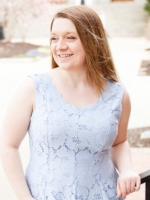
Despite the worsening pandemic, the West Lakes Division of the American Association of Geographers (AAG) Annual Meeting was still held in mid-November via Zoom from Southern Illinois University-Edwardsville, drawing in educators and students from the surrounding region.
Two of Mizzou’s geography graduate students presented at the meeting: Seth Kannarr in the Master’s/Doctoral Poster Competition with his piece titled “States Rated: An Index for Natural Hazard Vulnerability;” and Melissa Church in the Masters Paper Competition with her piece: “A case study of art and historic tourism in Bisbee, Arizona.” Kannarr took first place in his category and Church took third place in her grouping.
“This is an extraordinary showing,” says Department Chair Soren Larsen. “And it goes to show you the quality of research our graduate students are doing.”
“This is an extraordinary showing. And it goes to show you the quality of research our graduate students are doing.” - Soren Larsen
Kannarr’s research was inspired by the “Places Rated Almanac,” which is a guide to help people find the best places to reside in the U.S. He noted the book doesn’t provide a list of areas most at risk for natural hazards, and so he came up with the idea to calculate vulnerability scores based on a variety of data, and in doing so, created an original equation. In addition to research, he surveyed about 1,400 individuals about their perception of natural hazards using Qualtrics software. The result: “States in the Midwest and the Northeast are surprisingly at a higher vulnerability for natural hazards,” Kannarr says.
Church’s thesis is a case study of art and historic tourism in Bisbee, Arizona. She was intrigued by the community through word-of-mouth and by visiting the area. She thought of moving to Bisbee when her husband was getting out of the military, and liked the community much better than the one surrounding the base. “It would have been a better quality of life,” she says.
Bisbee, an old copper mining town, has changed into an art-tourism and historic-tourism town. Her research is based on four main themes: Bottom-up gentrification, land insecurity, community monitoring, and artists’ revitalization of the area.
Church’s thesis is a case study of art and historic tourism in Bisbee, Arizona. She was intrigued by the community through word-of-mouth and by visiting the area.
Kannarr and Church both say the AAG conference is a great learning opportunity and say they enjoyed watching other presenters. “It’s important to interact and network with professors and students across our region,” Kannarr says. “And it’s fascinating to see what active research they are doing at other universities. I also enjoy presenting my research as its good practice for me and I can receive feedback on my research.”
“It’s definitely worthwhile to attend AAG conferences,” Kannarr adds. “I would always advocate for my peers to join these conferences and put themselves out there. It’s well worth it.”
“I would always advocate for my peers to join these conferences and put themselves out there. It’s well worth it.” - Seth Kannarr
Church advises others who want to present, to have a few interviews completed if they are doing an interview or archival project. “I think you need to be into a certain percentage of your work to know if you’re going to be comfortable presenting,” she says.
“I think it’s a good way to test if you’re going to be successful or if this is the thesis that works for you,” Church adds. “Earlier I was working on a thesis that didn’t really fit me (CAFO Farming). But this one I know does. I was able to be successful in the meeting with it. I think it’s an indication I’m on the right path.” She says she’d like to participate again when her thesis is completed. “I would like to do better than third place,” she adds.
And as for Kannarr – would he participate again? “Heck yeah,” he says. “To others, I would say do not get too worried or stressed out by it. It’s all a learning experience, and being there and trying out is the most important thing.”